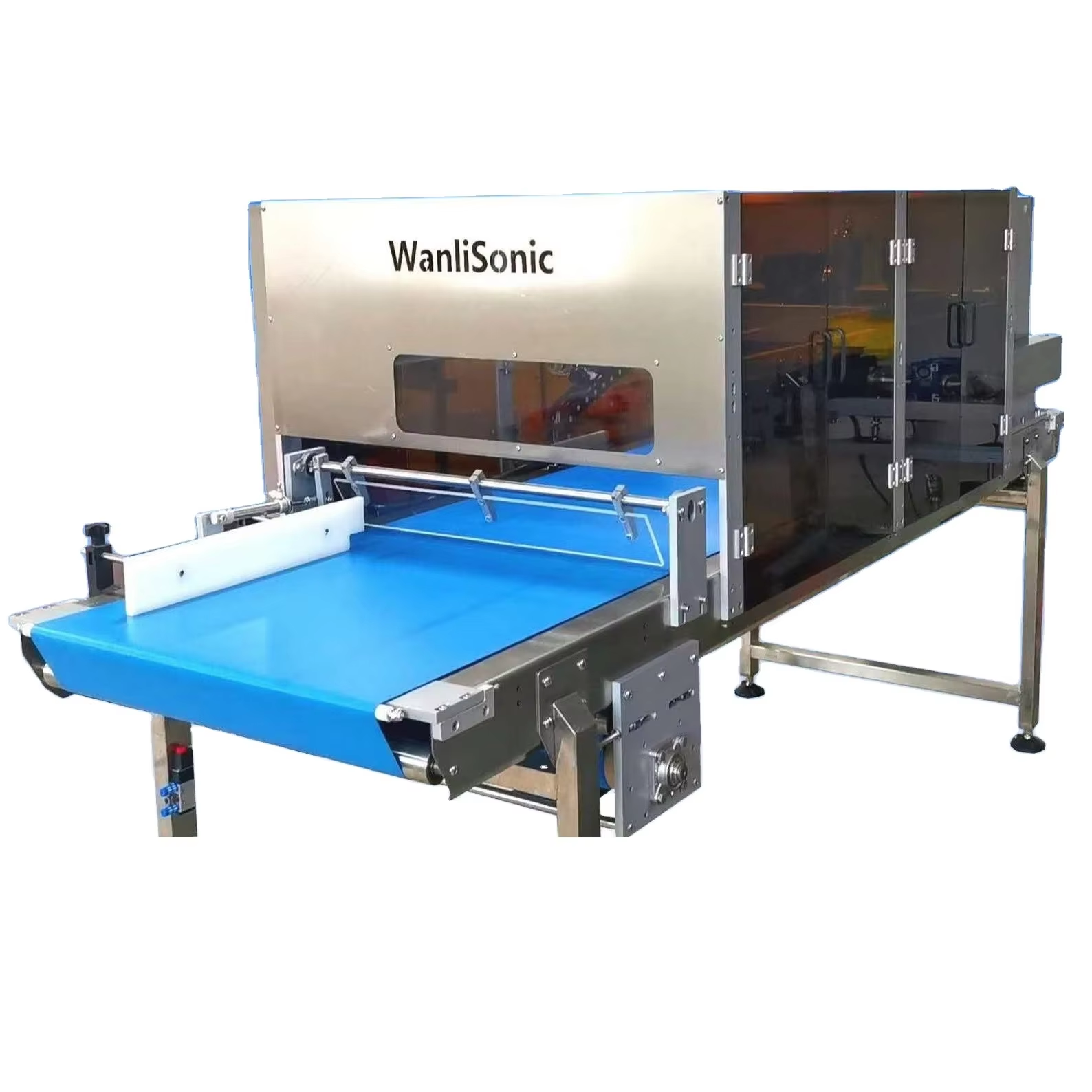Maximizing Bakery Production Through Advanced Slicing Technology
In today's competitive bakery industry, efficiency and consistency are paramount to success. A bread bars slicer represents a game-changing investment that can dramatically transform your bakery's output capabilities. Modern bakeries are increasingly turning to automated slicing solutions to meet growing demand while maintaining product quality. This comprehensive guide explores how implementing a bread bars slicer can revolutionize your bakery operations and drive business growth.
Understanding Bread Bars Slicer Technology
Core Components and Functionality
A bread bars slicer consists of several sophisticated components working in harmony. The primary cutting mechanism features precision-engineered blades, typically arranged in parallel configurations, designed to deliver clean, consistent cuts through various bread types. The feed system carefully controls product movement, while safety guards and emergency stops ensure operator protection. Advanced models incorporate automated belt systems and digital controls for precise thickness adjustments.
Technical Specifications and Capabilities
Modern bread bars slicer systems can process hundreds of loaves per hour, with cutting speeds optimized for different bread varieties. These machines accommodate various product sizes, from small dinner rolls to large artisanal loaves. The blade spacing can be adjusted to achieve specific slice thicknesses, typically ranging from 5mm to 30mm. Enhanced models feature programmable settings for different products, ensuring consistency across production runs.
Innovation in Slicing Technology
Recent technological advances have introduced features like optical scanning for precise positioning, self-sharpening blades, and intelligent speed control systems. These innovations help maintain optimal cutting performance while reducing maintenance requirements. Some models now incorporate IoT capabilities for remote monitoring and performance analytics, allowing bakeries to optimize their operations in real-time.
Operational Benefits and Production Impact
Speed and Efficiency Improvements
Implementing a bread bars slicer can significantly accelerate production throughput. Traditional manual slicing methods typically process 30-40 loaves per hour, while automated systems can handle 200-300 loaves or more. This dramatic increase in speed directly translates to higher daily output capacity and improved order fulfillment capabilities. The consistent operation of these machines also reduces bottlenecks in the production line.
Quality Control and Consistency
Automated slicing ensures uniform thickness across every slice, meeting strict quality standards demanded by commercial customers. This consistency reduces waste from irregular cuts and improves product presentation. The precise control offered by a bread bars slicer also helps maintain product integrity, preventing compression or tearing that can occur with manual slicing methods.
Labor Cost Reduction
By automating the slicing process, bakeries can significantly reduce labor costs while redeploying staff to more value-added activities. A single operator can manage the bread bars slicer while simultaneously handling other tasks, improving overall workforce productivity. This efficiency gain is particularly valuable during peak production periods when labor demands are highest.
Implementation Strategies and Best Practices
Installation and Setup Considerations
Proper installation of a bread bars slicer requires careful planning and preparation. The machine should be positioned to optimize workflow and minimize product handling. Adequate space must be allocated for loading, unloading, and maintenance access. Power requirements and safety considerations should be addressed during installation, ensuring compliance with local regulations and industry standards.
Staff Training and Safety Protocols
Comprehensive training programs ensure operators can safely and effectively use the bread bars slicer. This includes understanding machine controls, maintenance procedures, and troubleshooting techniques. Safety protocols should be clearly documented and regularly reviewed, covering aspects like emergency procedures, cleaning guidelines, and personal protective equipment requirements.
Maintenance and Optimization
Regular maintenance is crucial for optimal performance and longevity of the bread bars slicer. This includes daily cleaning, blade inspection, and periodic calibration checks. Establishing a preventive maintenance schedule helps avoid unexpected downtime and ensures consistent cutting quality. Monitoring system performance metrics can identify opportunities for further optimization and efficiency improvements.
Financial Considerations and ROI Analysis
Investment Planning
The initial investment in a bread bars slicer requires careful financial analysis. Consider factors like production volume requirements, anticipated growth, and current operational costs. Modern slicing systems represent a significant capital expenditure, but their long-term benefits often justify the investment. Many manufacturers offer financing options and leasing arrangements to help manage upfront costs.
Cost-Benefit Analysis
When evaluating the financial impact, consider both direct and indirect benefits. Labor cost savings, reduced waste, increased production capacity, and improved product consistency all contribute to the return on investment. Calculate the expected payback period based on projected efficiency gains and cost reductions. Include considerations for maintenance costs, energy consumption, and potential revenue increases from expanded production capabilities.
Frequently Asked Questions
What maintenance does a bread bars slicer require?
Regular maintenance includes daily cleaning of blades and surfaces, weekly inspection of moving parts, and monthly calibration checks. Blades typically need replacement or professional sharpening every 3-6 months, depending on usage volume and types of products being sliced.
How does a bread bars slicer handle different types of bread?
Modern slicers can be adjusted for various bread types through speed control, blade spacing, and pressure settings. Most models include programmable presets for common bread varieties, ensuring optimal cutting performance regardless of crust thickness or internal texture.
What safety features are included in modern bread bars slicers?
Contemporary models incorporate multiple safety features including emergency stop buttons, blade guards, automatic shut-off systems, and safety interlocks on access panels. Many also include light curtains or other presence-sensing devices to prevent operation when hands are near cutting areas.

